Featured Articles
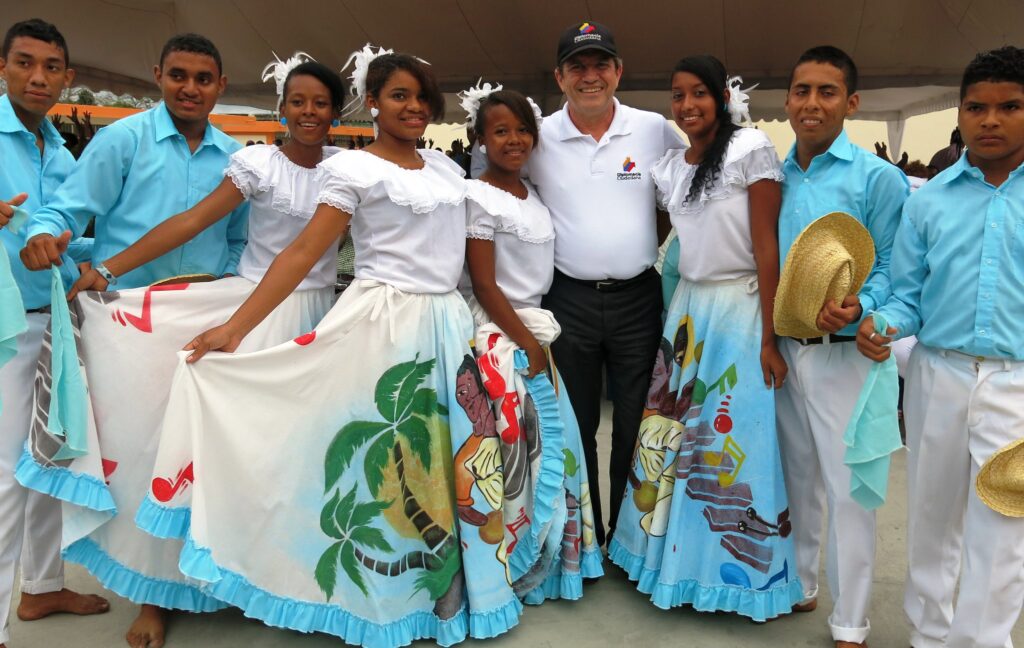
Beyond Resiliency: Empowering the Poor and Vulnerable to Help Cities Thrive
May 20, 2024 – As cities increasingly adopt resilience as a sustainability strategy, the term’s implications for urban policy should be carefully considered. Drawing on examples from Esmeraldas, Ecuador, Mel Gross explores resilience’s entanglement with neoliberal ideology, the agency of underrepresented communities in resisting imposed narratives, and alternative visions for truly thriving cities centered on equity and self-determination.

Transgression or Restoration? A Critique of Calls for a Transgressive Urban Forest
June 6, 2023 – A 2022 essay in the Journal of the American Planning Association warns that our urban landscapes communicate a misleading sense of compatibility between cities and nature, and called for a transgressive approach. Sasha Colbert argues while a critique of ecological aesthetics is useful, the authors discount ecological function that differs from pre-settlement conditions, and ignore inequalities and injustices at the foundation of our ecological crisis.
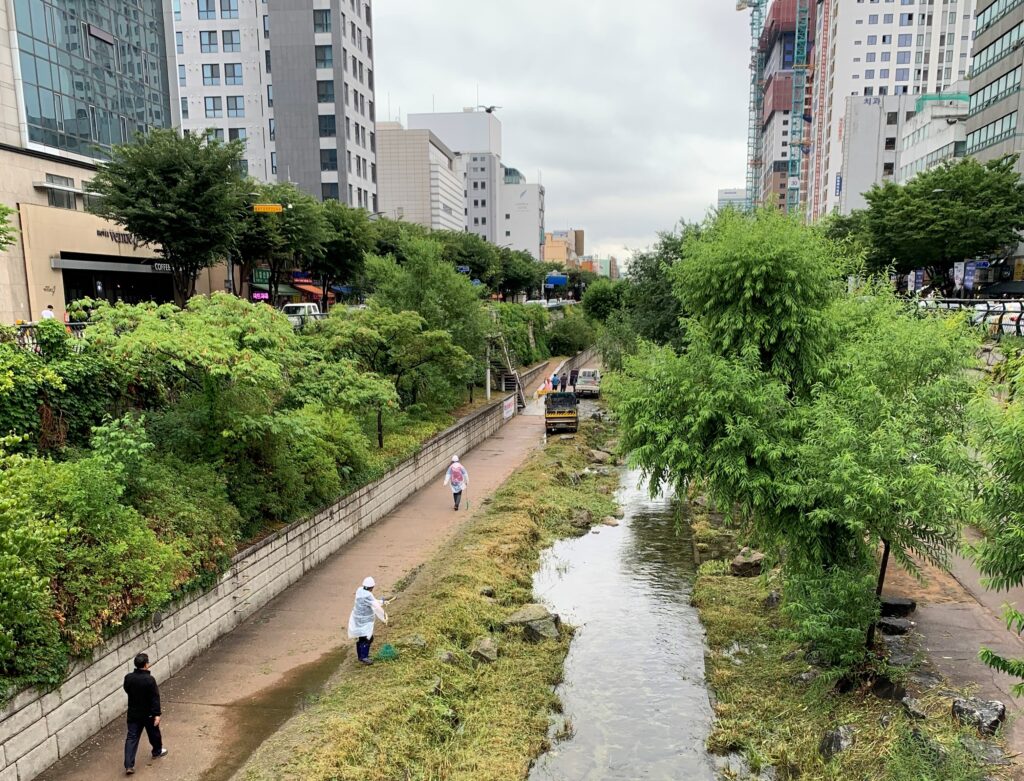
From Concrete to Oasis: The Cheonggyecheon and the Future of Urban Stream Restoration
May 16, 2023 – In addition to its role as a public open space in the midst of Seoul, South Korea, the Cheonggyecheon is a stream that provides a number of critical ecosystem services. As Jiyoon Kim writes, it also provides some important lessons about urban stream restoration.
Featured Reports

The Pomona Valley, CA
Arthropod-Friendly Gardens: A Model for Prioritizing Small-Patch Habitat Design and Certification
The Green City Studio, 2024
Coarse-scale landscape planning has drawn upon a wealth of landscape ecological research to develop strategies to preserve, restore and re-establish habitat for a variety of large predator species. While serving the needs of these species is vitally important work, these planning activities often leave out heavily urbanized communities, which may be devoid of large patches of natural vegetation, As a result, habitat concerns are often given little attention in community planning efforts in these urban environments. This reality is striking, considering the growing body of research highlighting the role of systemic racism and exclusionary practices that have disconnected low-income communities of color from the natural environment. This document explores the potential for re-establishing small-patch habitats for Arthropod species, including moths, butterflies, ants, bees, spiders, flies and other insects within a heavily urban matrix. As foundations of natural ecosystems, Arthropods have the potential to attract many other species, and these habitats have the opportunity to re-introduce small bits of nature into urban environments.

City of Baldwin Park, CA
Destination Baldwin Park: A Community Vision Plan for the City of Baldwin Park, California
Rebecca Cheung, Eugenia Connelly, Hayley Stansell, Tessa Wiley, 2024
Baldwin Park is home to approximately 70,000 residents located on Tongva Land in the eastern portion of Los Angeles County, California, approximately 15 miles east of downtown Los Angeles. The city’s walkable downtown origins, centered on the Pacific Electric (RedCar) Railway, have become embedded in an automobile-centered urban landscape as rail has fallen out of popularity in the last century. Interstates I-10 and I-605 intersect in Baldwin Park’s southwest corner, earning it the title of “Hub of the San Gabriel Valley”. While this may be an economic asset for the city, the dominance of automobile infrastructure presents several challenges common to most Southern California communities. Our vision plan positions Baldwin Park as a memorable destination by highlighting local identity, fostering connectivity, enhancing experiences, and activating new, exciting places. We address community, climate resilience, and sustainability on four functional levels: place, connection, experience, and identity. We create multi-use, neighborhood spaces across the city which are connected via safe, pleasurable pedestrian, bicycle, and public transit networks, elevating the role of each neighborhood in the city as hubs of activity.
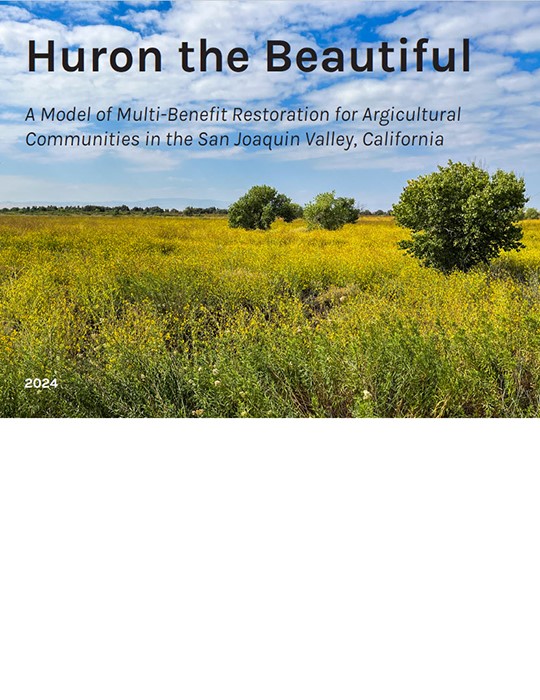
City of Huron, CA
Huron the Beautiful: A Model of Multi-Benefit Restoration for Agricultural Communities in the San Joaquin Valley, California
Connor Rudmann, Antonio Olea, Andy Sett, Francisco Salas-Tamayo, Alfredo Zuniga, 2024
“Huron the Beautiful” is a vision for the future of California’s San Joaquin Valley. As climate change and groundwater depletion threaten the future of industrial agriculture, a new model for sustainable land management and economic opportunity is desperately needed. Forged from a partnership between Cal Poly Pomona’s Department of Landscape Architecture, the City of Huron, the LEAP Institute, and the National Park Service Rivers, Trails & Conservation Assistance, the “Huron the Beautiful” vision plan proposes transforming a 3000-acre federally owned flood detention basin bordering the California Aqueduct into a multi-benefit recreation area that restores native habitat, attracts regional visitors, creates “green jobs,” provides environmental learning opportunities, and empowers local communities through co-management.
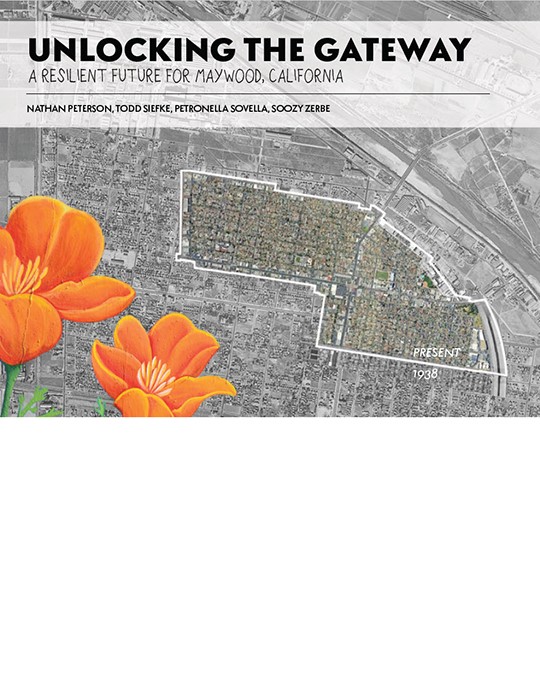
City of Maywood, CA
Unlocking the Gateway: A Resilient Future for Maywood, California
Nathan Peterson, Todd Siefke, Petronella Sovella, Soozy Zerbe, 2024
As the impacts of the climate crisis continue to intensify, densely urbanized cities are recognizing their lack of preparedness for future extreme weather events. Many Southern California cities are working to develop Climate Action Plans to create safe and healthy futures for their residents. These plans help identify areas of improvement so that they can achieve their climate goals and adhere to the State of California’s emission reductions requirements. Our study demonstrates the role of Landscape Architects in this process: cultivating creative and tailored solutions for cities as they retrofit to meet future benchmarks. Our vision is for Maywood’s landscape to reflect its residents, prioritizing their needs over industry. Our concept acknowledges the constraints of the city and proposes small, but mighty changes that give the community the tools to be resilient in the face of a changing climate. Our plan includes diverting truck traffic around the heart of the city, a dense ecological buffer for the city edges, converting inner city spaces to reflect the city’s identity, and developing a network of safe transportation and recreation options.
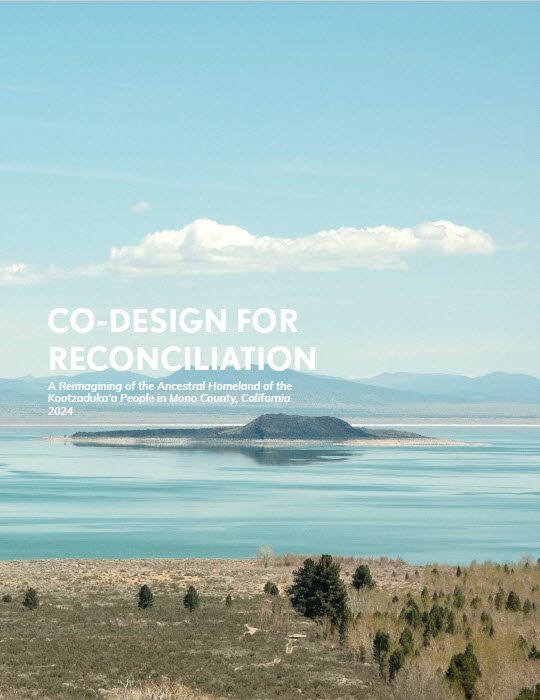
Mono Lake Kootzaduka’a Tribe
Co-Design for Reconciliation: A Reimagining of the Ancestral Homeland of the Kootzaduka’a People in Mono County, California
Cindy Camberos, Phillip Cooper, Megan Lassen, Julian Ordaz Fernandez, Scott Payne, 2024
The Mono Lake Kootzaduka’a tribe is one of seven traditionally associated tribes of Yosemite National Park, and one of only two who lack federal recognition. As an unrecognized people, the tribe has been denied land ownership, sovereignty, social services, and federal funding. This project originates in that status, and in the tribe’s desire to achieve their goals through alternate means, rather than waiting for federal recognition. The project team worked with the tribe to: (1) co-develop strategies for cultural heritage revitalization and education; (2) help identify opportunities to improve ecological health and resilience to climate change impacts within Kootzagwae; (3) explore potential economic opportunities for the Kootzaduka’a tribe within new projects; and (4), support the tribe’s efforts to become a model for other unrecognized tribes, building capacity through mutually beneficial collaboration with agency partners.
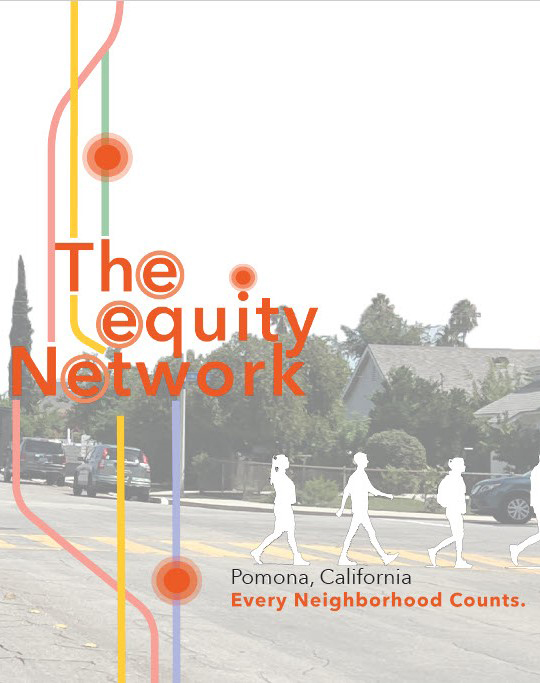
City of Pomona, CA
The Equity Network, Pomona California: Every Neighborhood Counts
Chip Erwin, Trinity Gomez, Aliah Mitchell, Abraham Vera, 2024
This project, in partnership with the City of Pomona, California develops an equity-based approach to enhancing green infrastructure, and improving access to amenities for historically underserved neighborhoods. Traditionally, equity has been defined in terms of even distribution of resources, often overlooking historical patterns of unequal treatment. This project focuses on equality of outcomes for each neighborhood to ensure a more inclusive approach. The Equity Network aims to direct resources to areas most in need by establishing vibrant neighborhood centers, enhancing cross-town connections through pedestrian-prioritized infrastructure, and implementing stormwater management solutions. The ultimate goal is to improve the overall quality of life, foster a sense of belonging, develop climate-resilient infrastructure, and enhance pedestrian safety while furnishing the city with access to resources throughout Pomona.




